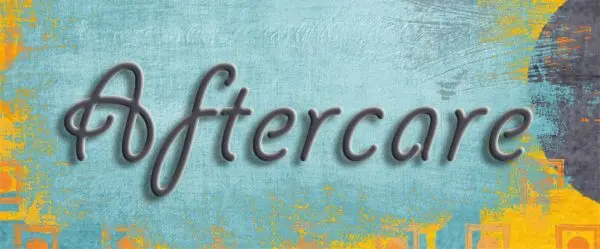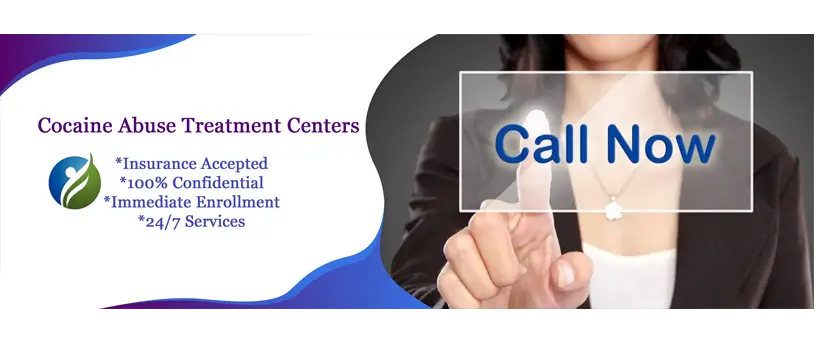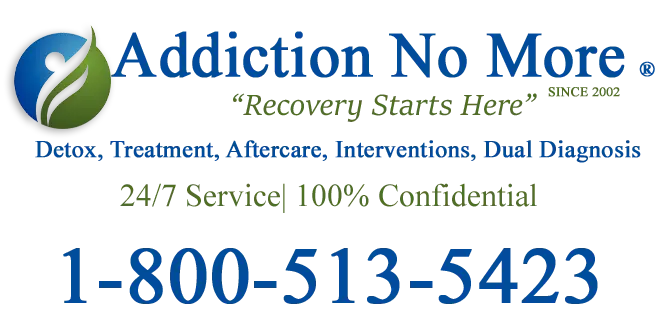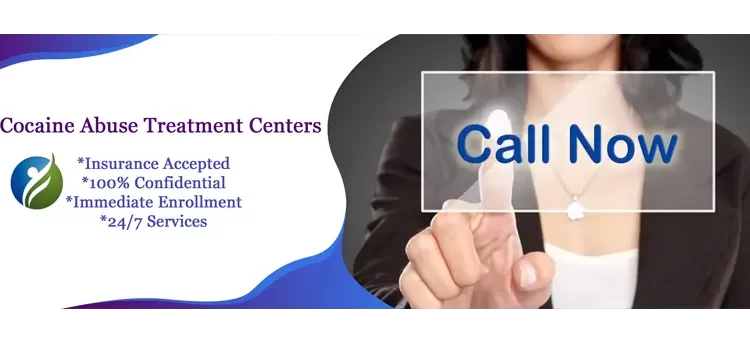Cocaine Abuse and Treatment for Cocaine Addiction
There are many options available to adults seeking help to overcome their addiction to cocaine. The level of care needed will determine the types of programs that are available to you. Cocaine addiction has been linked to many mental and physical problems with prolonged usage. Inpatient treatment, outpatient care, daycare, and support groups are among the accepted forms of treatment for cocaine addiction. Medically assisted
detox is not always necessary unless there are other drugs in the system at the time of intake. If you or a loved one has a cocaine addiction and is ready to receive help, contact one of our treatment specialists and they will help you find the best option for treatment.
Inpatient Treatment for Cocaine Addiction
Receiving treatment at an
inpatient treatment center for cocaine addiction can be one of the best options for someone who has developed a serious cocaine addiction. Treatment for cocaine at an inpatient treatment center can last anywhere from 21 days up to 90 days at most treatment centers for addiction.
Therapy is the core of treatment for cocaine addiction. It will help assess the root problem that had a huge part in the abuse of the drug, all the while helping you build coping skills for the stressful situations that life has to offer. Your therapist will start to plan a course of action for you to take home with you and set you up with aftercare to help you avoid relapses once initial treatment has been completed.
It is sometimes beneficial for the client to go to treatment further away from home. Getting away from temptations and friends who may still be using is often better for many people. Clients who go to rehab in another state also have a harder time leaving treatment early as well. Depending on the situation, our counselors may suggest looking for substance abuse programs that are a plane flight away. Give us a call if you have any questions about cocaine abuse and
treatment options.
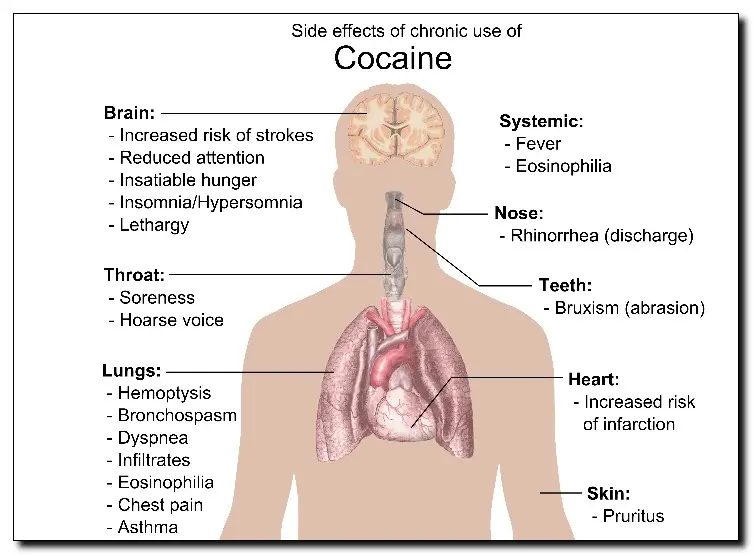
Long-Term Effects of Cocaine Use
Cocaine is an extremely addictive drug that can lead to addiction the very first time you use it. Side effects can include, increased heart rhythm and blood pressure, cardiac arrest, seizures, and even death can be among the side effects of cocaine abuse. Using cocaine is dangerous and the more you consume or use, the worse the side effects can get, putting distress on the brain and the heart. Cocaine-related deaths occur when there is too much of the drug in your system, causing rapid beating of the heart, putting the whole cardiovascular system in a state of emergency. This can lead to seizures and respiratory failure.
Cocaine, not unlike any drug, targets the brain’s neurotransmitters or the brain’s reward system. This will result in some pleasurable feelings of euphoria and well-being. Over some time, this will change the way the brain functions, leading the person to repeat the use of the drug. Cocaine is highly addictive itself, but when you change the chemical makeup and the delivery system by changing the powder into rocks known as Crack, the use of the drug can go up exponentially because the drug enters your system in a more efficient way through the lungs and straight up to the brain. Binge use will raise the risks of severe side effects since the user will need to intake more and more of the drug to try to get the desired effect that they got when they did the drug for the first time. This will lead to anxiety, irritability, and for some, a temporary state of paranoia or psychosis. Snorting cocaine for a prolonged period will irritate the inside of the nose and cause scabs to form on the mucous membrane which has been linked to septum damage that can lead to septum collapse.
Signs and Symptoms of Prolonged Cocaine Abuse
*Malnutrition
* Malnutrition
*Rapid weight fluctuations
*Tooth decay
*Sexual dysfunction
*Social isolation
*
Nosebleeds
*Aggressive behavior
*Irritability
*Suicidal thoughts
*Irritability
*Violent behaviors
*Theft
*Not able to feel pleasure
*Prostitution
*Needing more of the drug for the desired effect
*Drug dealing
*No Concentration
Common Side Effects from the Withdrawal of Cocaine
*Fatigue
*Sleeplessness
*Agitation
*Increased hunger and appetite
*Intense dreams
*Muscle ache
*Slowed motor response system
Cocaine Treatment for Teens
There are a few different options for teens who have developed a cocaine addiction.
Wilderness or outdoor therapy: Wilderness therapy for teens is one of the most effective treatments for cocaine addiction treatment is conducted in the great outdoors allowing for 24-hour supervision without the distractions of everyday life.
12 step programs: Teen
12-step programs focus on and promote the empowerment of teens so they can make positive life choices. Created by Alcoholics Anonymous, The 12-step program is one of the most recognized programs for teens.
Outpatient treatment for teenagers: Outpatient addiction therapy is a type of treatment that is usually set in an office building and the teen can go home and to school while undergoing therapy for their addiction. For someone with heavy cocaine addiction, this type of treatment is recommended as an aftercare option, due to the rate at which teens relapse while undergoing outpatient therapy as primary care for their addiction.
Inpatient treatment: Treatment
at an inpatient facility allows teens to separate themselves from the toxic environment that plays a part in the addiction process. Separating a teen from their environment can take the stress of everyday life and the pressures from their peers while undergoing treatment for their addiction. If you are looking for resources for your teen who has become addicted to cocaine or another drug please visit
Free My Addiction. They are one of the leading treatment helplines for teens seeking recovery through teenage drug and alcohol rehab.
Aftercare options can include the following
*Support groups
*12 step programs
*One-on-one therapy
*Group therapy
*
Sober living and therapeutic communities
*Day treatment programs

Ways to finance treatment for cocaine addiction
Location and length of stay will be a huge difference in cost, as more desirable locations will demand more money for those seeking treatment at their centers. See
costs of treatment. The length of stay at drug rehab is determined by the needs of the client and the length it takes to get through the program.
Financing for the treatment of cocaine addiction can be handled in a few different ways depending on the individualized resources that they have available. Most inpatient treatment programs will accept most
insurance carriers. Co-payments usually will apply to any treatment received, if the deductible has not been met. Give us a call
and we can see if you have benefits that you can utilize to cover the costs associated with receiving treatment for cocaine addiction. Some programs can offer sliding fee scales for people who have little or no means to cover the costs of treatment.
Local and
state-funded programs for cocaine addiction are located in many different states and
Drug Rehab Services is a great resource for these programs that are offered in your area. Some banks and credit card companies have special provisions that help cover the costs of treatment through low-interest loans and credit-free loans. We will help you discover all the options that are available to you to help cover the cost of treatment. Crowdfunding and social media funding are great resources for people seeking treatment. GoFundMe and Indie Go-Go are two of these sites and have had great results for those seeking help with their addictions.
Contact us immediately if you need help with your addiction to cocaine. We can help. Our counselors are here 24 hours a day, 7 days a week.

Our certified addiction specialists are here to answer any questions that you may have. Please call us toll-free today. We are here for you 24 hours a day, 7 days a week.
Among people aged 12 or older in 2021, 1.7% (or about 4.8 million people) reported using cocaine in the past 12 months. Among people aged 12 or older in 2021, 0.5% (or about 1.4 million people) had a cocaine use disorder in the past 12 months. In 2021, approximately 24,486 people died from an overdose involving cocaine. *The COVID-19 pandemic had an impact on data collection for the 2021 National Survey on Drug Use and Health (NSDUH).
Summary
Service Type
Cocaine Addiction Treatment
Area
Nationwide help in locating cocaine addiction treatment
DescriptionWe can help you find a drug rehab center for cocaine abuse today. Give us a call at 1-800-513-5423 for more information.


